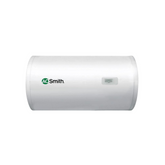Should I buy a bidet?

If you are considering to buy a bidet, you might be wondering whether it is worth it. Bidets can be quite expensive and some people wonder if they should pay that much money for something they don't use every day.
However, there are many benefits to using a bidet, such as hygiene and comfort. A bidet can also help with hemorrhoids and constipation when used correctly.
What is a bidet?
A bidet is a plumbing fixture that is used to wash the genital, anal, and perianal areas of the body. It is typically installed next to a toilet in the bathroom. A bidet can be installed as a standalone unit, or it can be integrated into other fixtures such as toilets or bathtubs.
The word "bidet" comes from the French language meaning "pony", which describes its use for washing like a horse's backside. The first written reference to this device was in 1694 by Furetière in his Dictionnaire Universelle de la Langue Française; however, it may have existed much earlier than that.
Bidets are often thought of as more hygienic than using toilet paper alone because they provide water for cleaning after using the toilet while also reducing waste and clogging.
- The Pros
- Save on toilet paper
- You save money by using far less toilet paper than you would with a typical flush toilet. Due to toilet paper shortages brought on by panic purchasing during the COVID-19 outbreak, sales of bidets have increased dramatically in recent months.Impressively hygienic
- While using toilet paper is the standard in most Australian homes, using water to clean up after using the bathroom could result in a much more hygienic clean. Paper wipes are much less thorough than water, and there is also concern about the efficacy (or lack thereof) of handwashing after wiping.
- The cons:
- The idea of using a bidet, which sprays water from beneath the toilet seat, may seem unhygienic and even unpleasant to those of us who were raised on toilet paper. Bidets can be challenging to use, and it might take a few messy tries before you get the hang of it.
- Paper still needed?
- Bidets may save on toilet paper, but they don't necessarily remove the need for it completely. Many use paper to pat themselves dry afterwards.
Different types of bidet
In the Middle East and some regions of Asia, handheld bidets are also known as "shattaf" (washers). This style of bidet, sometimes referred to as a "bum cannon," is nothing more than a straightforward water hose with a user-controllable nozzle. It is fastened to the toilet's side and uses the tank's own water supply. While remaining on the toilet, you use a shattaf and flush the water away.

- Detachable bidet seats
- Using an extra removable bidet seat is one technique to turn your regular toilet into a bidet. This fits below the current seat or completely replaces it.
- The nozzle spray is then set by straddling the toilet bowl and turning the removable seat's knob.
- Detachable bidet toilet seats come in a broad variety, ranging from the straightforwardly manual to the spectacularly automatic. Investigate them to locate the best one for you.Smart toilets and electronic bidets

- The most recent electronic bidets provide consumers with a wide range of practical and fascinating functions.
- These include deodorizers, adjustable water temps, built-in air-drying vents, room sensors, ambient music soundtracks, self-warming toilet seats, and variable spray angles and pressures.
Over the years, the bathroom has seen a considerable amount of changes. We have Smart speaker showerheads, smart toothbrushes that can play music while you shower, and smart toothbrushes that can assess how effectively you're brushing. However, the bathroom has historically been disregarded, but not anymore.
If the pandemic has taught us anything, it is how well we can move with the times. And what about that? The use of bidets in bathrooms should become standard. Bidets will continue to exist despite the first challenge of changing our preconceptions because of the savings you'll realize and the cleaner you'll have after using one.



